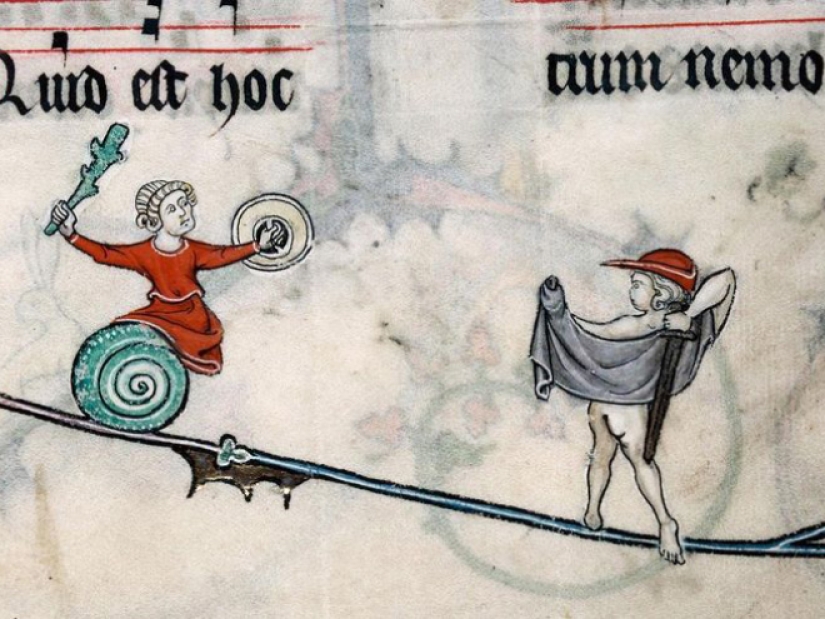Why do medieval drawings show snails fighting knights?
Categories: Culture | History | World
By Pictolic https://pictolic.com/article/why-do-medieval-drawings-show-snails-fighting-knights.htmlMedieval art sometimes amazes with its unusual images. On the pages of manuscripts of that time you can find a variety of monsters with which brave knights fight. Moreover, these “monsters” are not always so scary. For example, who would be scared of a unicorn or a rabbit? And the snail?

One of the most mysterious are the drawings of the 13th–14th centuries, in which knights fight with snails. This theme was especially actively developed in marginalia - drawings in the margins of medieval books. At that time, artists generally painted strangely: just look at the medieval images of people being killed, but they didn’t care. And here are militant snails: what is the reason for such an unusual topic?

The very idea of a knight fighting a snail seems comical. After all, a snail is far from a warrior, and, of course, is not a formidable danger for a knight. Where did this idea come from? Researchers have expressed different hypotheses.


One of them was proposed by Lillian M. S. Randall of the University of Chicago back in 1962. In her opinion, the snail depicted in these drawings is an allegory of the Lombardians. This region of Italy was known for its moneylenders, who were often called cowards by the French. And here the snail comes to the rescue - a slow and, according to the French, cowardly creature. By combining the image of a knight and a snail, the artists created a vivid irony on the theme of the French attitude towards the Lombardians.

Another version says that the snail in medieval images is a symbol of cowardice. A knight fighting such an enemy is portrayed as a coward who fears a weak opponent. And if a knight asks a snail for mercy, then he is a triple coward.

We must not forget about the real threat that snails posed in those days. For medieval peasants, snails, like many other insects, were pests that spoiled the harvest. The harm from them was so noticeable that in the Middle Ages even trials were held against pests, including snails. These slow creatures were often associated with the fiends of hell.

However, this explanation does not answer the question of why it was the knights who fought with snails, and not, for example, peasants with pitchforks. Perhaps the artists put a different, deeper meaning into this image.

It is believed that knights opposed snails as symbols of the aristocracy. Aristocrats were often perceived as lazy and arrogant, and this stereotype could be conveyed through the image of a snail slowly crawling up the stairs. This interpretation is also supported by the fact that many of the aristocrats served their masters for many years in order to obtain higher ranks and privileges.

Another hypothesis was proposed in 1850 by the Comte de Bastard. He argued that the snails in the marginalia symbolize resurrection. He associated this with the image of the resurrection of Lazarus, next to which snails were often depicted. Thus, the snail leaving its shell became a metaphor for a person being reborn after death.

The mystery of snails in medieval drawings remains open. But thanks to these images, we can better understand the culture and worldview of the people of that era. These drawings are a reflection of their fears, hopes, beliefs and humor.











Medieval drawings have long aroused surprise and interest among our contemporaries. Recently, Czech reenactors decided to give new life to these unusual miniatures, and their recreated scenes make viewers laugh heartily.
Recent articles

The right lamp or lampshade can create the right atmosphere and a sense of comfort in the room, and some of them are worthy of ...

It is implied that drinking alcohol is a fact that does not have a very good effect on health. But this is all a human tendency to ...

Many book heroes were born not only in the writers' fantasies, but also in real life. Authors are often inspired by familiar ...